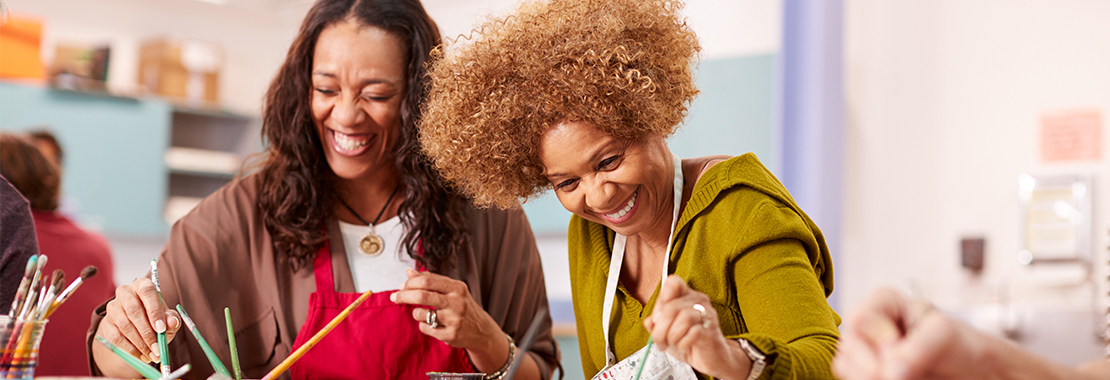Courtney Pham is a Senior Instructor in the College of Business at Missouri State University
Picture this: you go out of town for a conference or vacation. You meet so many people vital to your professional and personal growth, but once you get home you can’t seem to reach out or stay connected with them! I’m sure most of us can relate to this scenario, given the demands on our time, in class and out. It can even be as simple as lacking topics to spark a conversation.
My colleagues and I face these issues regularly in the academic world. While I know that interacting with my co-workers improves morale and creates a positive work environment, juggling peer connections with new responsibilities—like prepping for a new discipline, dealing with a new student cohort, or serving on a different committee each year—can be tough.
It seems everyone has a different way of solving this issue around lack of time. Personally, I resort to multitasking. I grade papers while chatting with peers passing by my office door or type up emails while a student visits during office hours. I thought this was an extra efficient way to complete my tasks, until I learned that multitasking could be decreasing my productivity by 40%. Fortunately, I’ve stumbled upon a Ted Talk by Tim Harford about multitasking. Tim introduced me to the concept of slow-motion multitasking, or as he puts it: “having multiple projects on the go at the same time, and you move backwards and forwards between topics as the mood takes you, or as the situation demands.” This new information has reframed my way of multitasking. It inspired me to connect with my peers in new, more creative ways.
Make It Personal
According to John Steinert, starting with a personal interest can create “new avenues for interesting content.” As it happens, my office is on the opposite side of where most of my new colleagues’ offices are located so they don’t see me or know who I am. I wanted to share my culture along with my passion for cooking with my colleagues, so I invited a few of them to my home for dinner. I set out a noodle bar and introduced my colleagues to each ingredient so they could assemble their own noodle dish for taste and visual appeal. Over the course of dinner, different topics came up revolving around international food, international travel and study abroad. At the end of dinner, we had found a bond through food and agreed to take turn hosting dinners at our own homes to get familiar with each other’s cultures. In addition, I’ve found a couple of colleagues who expressed interest in collaborating with me to recruit students on my next study abroad program to a new locale within the emerging markets.
Share Resources
A positive work environment fosters communication and interaction among peers. One of my colleagues built a shared, centralized and indexable bank in our LMS during the pandemic. We all contributed by keeping it current. Instructors added descriptions of advisor roles and organizational responsibilities in which we currently serve. We also shared roles and time commitments for committee involvement. We have access to teaching documents, best practices, syllabi, teaching interests and schedules, all filed under Teaching. There’s also a Tenure and Promotion matrix to help us with our upcoming promotion, or even access graduate assistants’ working schedules, freeing up our administrative assistant to address other pressing matters. It saves me and my colleagues hours of searching on our university’s intranet for certain forms. It also provides me the opportunity to interact with our peers on a smaller scale.
Add “Connecting” to Your To-Do List
There’s no doubt that it feels incredibly gratifying to tick multiple things off our to-do lists. This satisfied feeling stems from our body’s release of dopamine. However, we often conflate the feelings of gratification and of being productive. According to Susana M. Halonen, we are not as productive as we think. When the brain gets used to multitasking, it starts to think that doing many things at once is good. The brain will release dopamine even while we are distracted from our main tasks. Based on her monotasking suggestions, I shifted my habit to performing one task at a time within a dedicated timeframe while using a checklist and crossing off items. This technique allows me to get many things checked off at various time throughout the day or week, but not all at once.
How does this fit in with interacting creatively with my peers? One of the tasks on my weekly checklist is to text or email a colleague from my committee to ask about the semester and their classes. I would rotate a member each week until I exhausted the list. They are usually very responsive in sharing their week’s successes or challenges. This option gives them more flexibility in their responses. It also beats walking up and down the hallway trying to facilitate small conversations with my peers.
Ultimately, the idea of multitasking works if I have the right approach. I can still teach, prep for new classes, research, organize study away programs, advise student organizations, serve on multiple committees and even host dinner parties—all in one semester while continuously staying connected with my peers. If I am stuck on one project, I can creatively reach out to peers for help to reduce pressure. I can give my brain a break from the current project while pivoting my focus to another challenging project. This is a win-win in my book.
Staying connected is one of the major challenges faculty have faced in recent years. Download our inaugural Faces of Faculty report to find out what other challenges instructors are dealing with this year compared to their biggest concerns 3-5 years ago.


